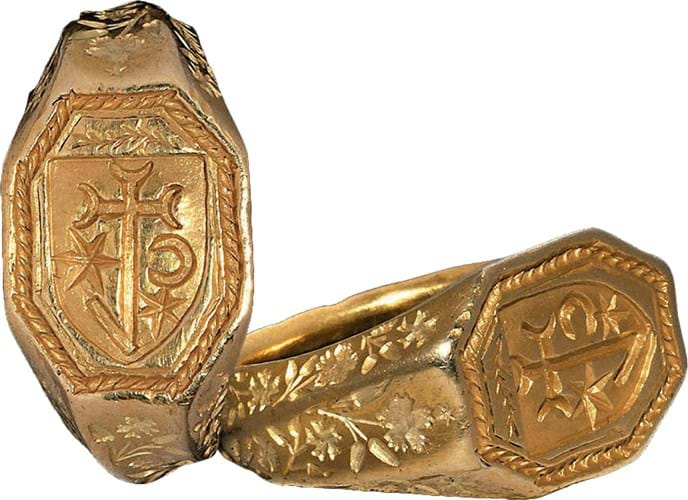The substantial gold merchant’s ring had been found in a private garden close to the site of Bridlington Priory in March 2019.
After proper procedure for treasure discoveries, it was reluctantly returned to the finder as the local museum was not in a position to acquire it. It took a double-estimate sum at TimeLine Auctions (25% buyer’s premium) in London on February 25.
The ring, worked to the shoulders with sprays of carnations, includes an enigmatic intaglio comprising an olive branch and a shield incorporating an anchor with crescent ends flanked to the left by a crescent and to the right by a six-pointed star.
Enigmatic and secretive
Medieval and Tudor merchants’ marks, a way of identifying personal property or to confirm identity, were separate from the heraldry used by noble families. These marks, enigmatic and secretive by their nature, were used on seals attached to goods for identification purposes or for sealing documents.
Those that have been deciphered often hold punning references to personal names. So, for example, the presence of an olive branch here could suggest the name Oliver and the carnations a symbol of betrothal. The six-pointed star and the crescent may suggest a local owner: both symbols were used as mintmarks on the coins struck at the York mint under Henry VIII.
The centre of Bridlington life for four centuries before the Dissolution in 1538 was a large Augustinian priory with extensive landholdings across northern England.















